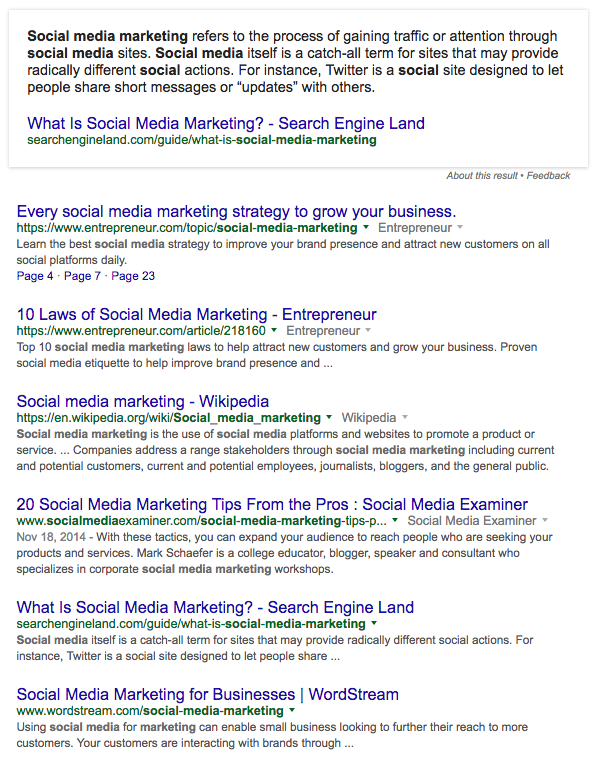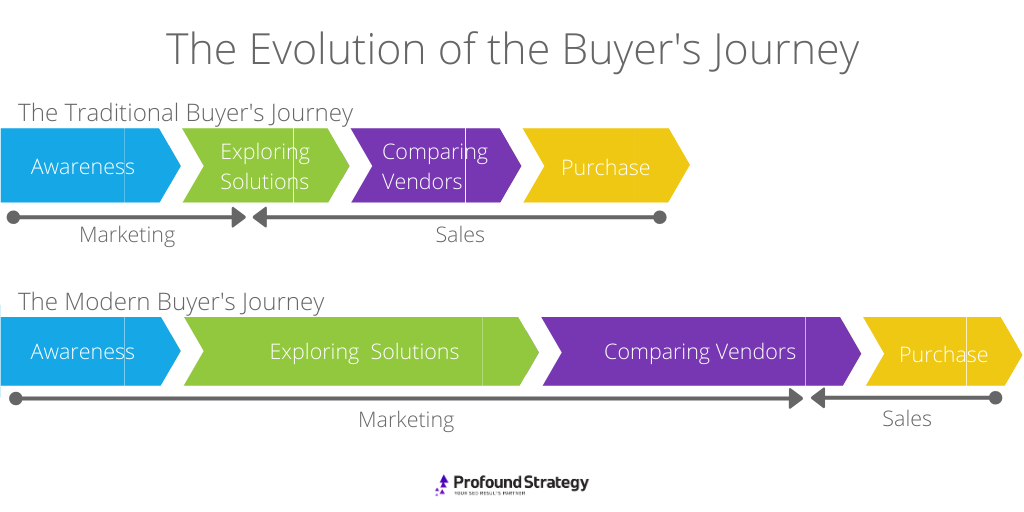How to Generate Leads from SEO
SEO is universally accepted as an effective means of driving traffic to a website, but few sales and marketing teams consider it a tool for generating leads or driving conversions. The reason: only about 10% of site visitors arriving through organic search are ready to purchase. However, by utilizing search optimization solely for the purpose of increasing site traffic, marketers are ignoring the potential to turn the other 90% of incoming organic traffic into promising leads.
Modern SEO is more than just conducting keyword research, acquiring links, and optimizing site content and metadata for targeted terms. Good SEO enables businesses to attract buyers in every stage of the purchasing journey, provide valuable content that enables those buyers to move into subsequent purchasing stages, and ultimately convert organic traffic into customers.
How? By shifting the way sales and marketing teams think about SEO. Keyword research is more than a method of finding a frequently searched term to plug into an existing landing page; it’s a means of analyzing consumer intentions. Quality content is more than just link bait—it’s a means of providing valuable resources to people who are in need of guidance.
If you take the time to employ best practices, SEO can become a highly effective lead generation tool.
Research the User Intent Behind Your Keywords
Consider how your organization currently uses keyword research. Is it a means of discovery, or is it an afterthought used to find popular phrases to plug into metadata and content? If the latter, you’re missing out on a huge opportunity to uncover the intentions behind the queries that drive organic traffic to your site.
Say you have a landing page listing the features of your automated social media publishing software that brings in a lot of traffic for the keyword “social media marketing.” In reviewing your analytics, you discover that your bounce rate for that page is very high. It’s possible that the content of your page may not be what searchers are looking for when making that query. To reduce your bounce rate, you need to determine the intentions behind that search query.
The easiest way to discover those intentions is to study the SERP for the keyword in question. Google is heavily invested in providing the most relevant results, and their algorithms are at work 24/7/365 to determine what pages answer users’ intentions.
A depersonalized search for “social media marketing” produces a robust SERP—with the maximum number of paid ads, a featured snippet, news, etc.—and a list of organic search results that all provide information, not products.

This tells us that all of Google’s data for that search term indicates that people want information, not software. Capturing buyers’ attention based on the keyword “social media marketing,” means creating some really great, informative content.
Cater to Visitors in Different Stages of Purchasing
Modern purchasers go through four distinct stages when making purchases: awareness, exploring solutions, comparing vendors, and purchase.

SEO content that’s optimized for leads and conversions needs to cater to individuals in each stage.
- Buyers in the awareness stage are only recently aware they have a problem, and are seeking quality guidance on potential solutions. They’re looking for introductory, high-level information. Infographics, short blog posts, and videos can be an effective means of answering your visitors’ basic questions.
- Buyers in the exploring stage are aware of the problems they’re facing and are actively researching solutions. They’re not prepared to purchase and are not yet interested in the specific features of your solution. Instead, they’re looking for general information about the value of different solutions. Long-form content and ebooks are effective in engaging buyers at this stage, and can be good opportunities to capture contact information via gated content.
- Buyers in the comparison stage are actively evaluating vendor solutions. They’ve determined that they need a product, and have moved on to comparing different offerings. Help them by defining how the specific features of your product provide value. Checklists, case studies, and third-party product comparisons are effective means of serving content to visitors at this stage.
- Buyers in the purchase stage know exactly what they want and are ready to make a decision. Landing pages that simplify the buying process and provide easy access to contact information are critical for buyers at this stage.
By providing helpful search-optimized content to buyers in all stages of the purchasing journey, you can establish your brand as an authority, and systematically funnel buyers into the purchase stage using effective CTAs.
Utilize Effective CTAs
Spreading content across multiple pages can be a great way to target buyers in different stages of the purchasing journey. Each page you create targets a keyword that’s appropriate for the visitor’s intentions, and each page can include one call-to-action designed to extend engagement and create leads.
- CTAs that point to resource centers can be an effective means of extending engagement from buyers in the awareness and exploring stages of their journeys.
- CTAs for gated content can be effective for gathering contact information for qualified leads in the exploring and comparison stages.
- CTAs for free trials and giveaways can be effective in driving conversions from buyers in the comparison stage as well as acquiring contact information for promising leads.
Using effective CTAs to guide organic traffic through the buying process will increase your leads and conversions naturally, and it will create confidence in your brand among potential clients because you provided all of the information they needed to make their decision throughout every step of the process.
Shifting SEO Practices to Support Lead Generation
SEO is not an isolated practice to be used solely for increasing organic traffic. SEO should work alongside lead generation and nurturing efforts by helping provide potential buyers with the exact information they need in the exact moment that they need it.
Reviewing your existing site analytics is a good starting point in revising your SEO strategy. Look for pages with high bounce rates, and use the tools SEO provides to transition the content of those pages into high-performing marketing pages that provide tremendous value to visitors while also helping to drive conversions.
 Ready for more? Check out the latest edition to our SEO Best Practice Series, How to Optimize a Content Download Landing Page for SEO and Conversion. This entire series of downloads is a collection of internal documents our team has been maintaining and using to drive great results for our clients. We thought it was time to share.
Ready for more? Check out the latest edition to our SEO Best Practice Series, How to Optimize a Content Download Landing Page for SEO and Conversion. This entire series of downloads is a collection of internal documents our team has been maintaining and using to drive great results for our clients. We thought it was time to share.
What's Next?
Profound Strategy is on a mission to help growth-minded marketers turn SEO back into a source of predictable, reliable, scalable business results.
Start winning in organic search and turn SEO into your most efficient marketing channel. Subscribe to updates and join the 6,000+ marketing executives and founders that are changing the way they do SEO:
And dig deeper with some of our best content, such as The CMO’s Guide to Modern SEO, Technical SEO: A Decision Maker’s Guide, and A Modern Framework for SEO Work that Matters.




